Jerry McDonald: When George Foreman and Hayward were at the top of the boxing world
Published in Boxing
SAN JOSE, Calif. — Lowell Hickey was relaxing by the pool in Kingston, Jamaica, snoozing after fighting the effects of jet lag.
He felt something tickling his feet, opened his eyes,and there was George Foreman, a few days shy of being known as the baddest man on the planet, looking down at him.
The baleful stare that was such a part of Foreman’s first act as a boxer and public personality was missing, replaced by a look of mischief.
“George had this big grin on his face,” Hickey recalled. “He was screwing around.”
That was only one of the memories that came back to Hickey when he received a text from his grandson Friday informing him of Foreman’s death at age 76.
As the obituaries of the two-time heavyweight champion and international celebrity began to appear online, few if any included Foreman’s time in the East Bay. Foreman called Hayward his hometown for most of his early career, right up to the point when he shocked the boxing world on Jan. 22, 1973 by destroying Joe Frazier with six knockdowns before the fight was stopped in the second round.
Hickey, 82, literally had a ringside seat as a sports writer and editor of the Hayward Daily Review to watch Foreman climb to the top of the boxing world.
The access was courtesy of Dick Sadler, an iconic boxing trainer who lived in a modest home near downtown Hayward. He made sure the hometown paper was represented to cover Foreman in venues such as Jamaica, Japan and Venezuela.
Sadler would visit the since-demolished offices of the Review on occasion and brought Foreman around a time or two in addition to introducing him to service clubs and local politicians. Hickey, who still lives in Castro Valley, would watch Foreman train.
Hickey, who joined the paper in 1967 and was the sports editor from 1969 through 1984, was my first boss in the newspaper business as a part-timer covering high school sports and the first person I thought of when Foreman’s death was announced by his family on Instagram.
The day Foreman won the title, I was a freshman at Mt. Eden High, and there was a buzz on campus among my sports-minded circle of friends about Hayward being identified as the hometown of the heavyweight champion.
I’d seen Foreman by chance as a teenager when Sadler had organized a training session in the lower level of the Southland Mall. Workout partners on the opposite side of the heavy bag shuddered and held on for dear life as Foreman slammed into it with his gloved fists.
Foreman moved to Hayward not long after winning the gold medal in the heavyweight division in the 1968 Olympics in Mexico City. He’d been in the area working with the Job Corps in Pleasanton, relocating after a troubled youth as a high school dropout in Houston’s Fifth Ward. Foreman came out of nowhere to win gold at 19, entering the games with just 20 amateur fights.
With that as a backdrop, Foreman and Sadler in 1969 went to work in Hayward with Foreman living in a modest midtown apartment.
“He ran in the Hayward hills behind Cal State and chopped wood,” Hickey said. “Dick was big on that, then he’d train at the Hayward Boys Club.”
Foreman mostly kept to himself, and wasn’t interested in interacting with strangers or most of the media. He could be curt and rude. Part of it was immaturity, and part of it was following the lead of Sonny Liston, a former heavyweight champion who worked with Sadler and would come to Hayward on occasion to spar with Foreman before his death in 1970. Liston was famous for being ill-tempered and intimidating.
Yet things were different with Hickey.
“He could be surly with other people, but he was wonderful with me,” Hickey said. “I’d bring my 2-year-old son to George’s workouts and he’d hold him.”
Foreman was 37-0 with 34 knockouts against suspect competition hand-picked by Sadler before the Frazier fight. Frazier was 29-0 with 25 knockouts and owned a 15-round decision in 1971 over Muhammad Ali in the so-called “Fight of the Century.”
“I was in his camp and was hopeful, but realistically, he was a big underdog,” Hickey said. “Sadler was very careful in how he brought him up. But you look at it in retrospect and Frazier had a perfect style for George. He stayed right in front of him.”
Boxing legend Archie Moore, who was assisting Sadler with the training, told Hickey that Foreman was the “hardest puncher who ever lived.” Hickey wasn’t sitting far from announcer Howard Cosell. After five knockdowns, Cosell was in the midst of saying, “It’s target practice for George Foreman! It’s target practice!” when the end came after the sixth knockdown.
With one vicious uppercut, the fight was over.
“It was just brutal,” Hickey said. “It actually lifted Frazier off the canvas. George was telling the referee, ‘You’ve got to stop it or I’m going to kill him’ because Frazier wasn’t going to quit.”
After the fight, the locker room facilities were so small the media was invited back to the hotel. Reporters were let in one by one and given a few minutes and then ushered out so others could join in. Hickey, however, was waved in by Foreman.
“I told him I’d make it quick and he said, ‘No, you’ve got as long as you want,' ” Hickey said.
After the win, Foreman moved to a 5 1/2-acre ranch spread in Livermore with a menagerie on his property that included a lion named “Lion” and a tiger named “Tiger.”
Hickey traveled to Tokyo for a one-round knockout of Jose Roman, then to Caracas to witness a second-round destruction of Ken Norton.
“I’ve never seen a guy so frightened walking into a ring as Ken Norton was,” Hickey said. “He’d usually come in and bounce around. He just laid against the ropes when he came in. It was amazing.”
Hickey traveled to Africa for the “Rumble in the Jungle” against Ali, only to learn while waiting on a connection in Belgium that Foreman had sustained a cut over his right eye during sparring. He continued on to Zaire only to learn the fight would be delayed five weeks.
Because of the delay, Hickey flew back home and didn’t return to Africa for the fight on Oct. 30. Foreman was never able to spar because of the cut. He was stopped in the eighth round as Ali sapped his strength with his “rope-a-dope” strategy along the ropes.
Hickey’s contact with Foreman was minimal after the Ali fight. When Foreman fought a farcical exhibition against five boxers in one day, Hickey was critical of it in a column, prompting a phone call from Foreman.
“He was really nice about it and tried to explain it to me, but he’d broken off with Sadler by then and that’s one of the last times we talked,” Hickey said.
Other meetings included a late breakfast at a Hayward IHOP when boxing promoter Henry Winston was attempting to coax Foreman, who’d retired to his ministry, out of retirement. Foreman and Hickey saw each other again at All Saints Church when one of Foreman’s physicians passed away.
Hickey watched from a distance as Foreman recreated himself into a genial pitchman, actor and lovable celebrity. Foreman launched a comeback at age 38 — 50 pounds heavier at 267 than when he fought Frazier — that eventually resulted in an improbable 10th-round knockout of Michael Moorer when he was 45 years old.
Foreman’s personality transformation included some genius public relations, but also unearthed a playful side of his personality Hickey had witnessed poolside in Jamaica.
“I think he always had a good sense of humor,” Hickey said. “It was there, even if he didn’t show it to everyone.”
©2025 MediaNews Group, Inc. Visit at mercurynews.com. Distributed by Tribune Content Agency, LLC.
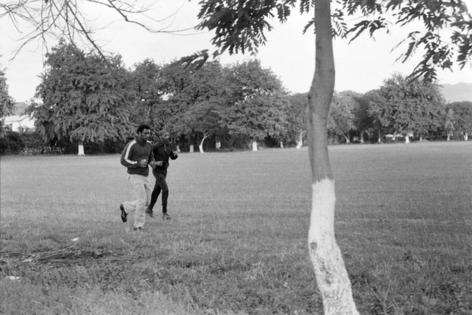
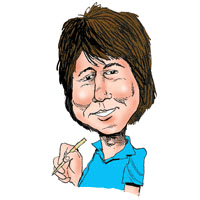
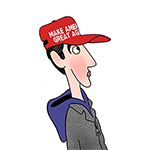
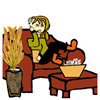
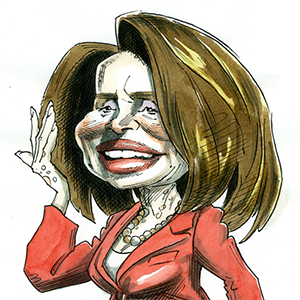
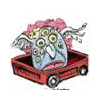

Comments